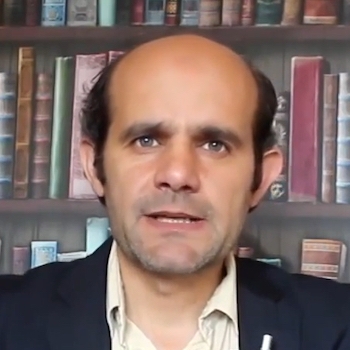
Why Bashar Assad Failed where His Father Succeeded
Shortly after the Syrian uprising began in March 2011, Bashar Assad pledged to suppress it as ruthlessly as his father had suppressed the Islamic revolt in the 1980s. He pledged to Iranian and Hezbollah leaders, “My father taught the Syrian people a lesson in the 1980s for thirty years, but now I will teach them a lesson for one hundred years.” However, Bashar failed to fulfill his pledge, and the uprising spread throughout Syria and turned into a prolonged armed struggle between his government and the insurgents. Although Hafiz Assad’s strategy was more astute, many other factors contributed to the weakness of the 1980s revolt which enabled him to suppress it ruthlessly. These factors are vital to identify and understand, since they were missing from the 2011 uprising and notably contributed to Bashar’s inability to succeed as his father had.
Perhaps the most important factor was the urban form of the 1980s uprising, which reflected the shortcomings of the social network between insurgents in the cities and people in the surrounding villages. There was an incoherent social and religious structure between the urban and rural areas, and in the city of Hamah, the center of the Islamic revolt. For instance, Sunnis mainly occupied the city, while the surrounding villages were heavily Alawi, with some Christian. On the contrary, in 2011 there was a strong social network between urban and rural zones in the center of the uprising, Daraa. This network was based on religion, clans, and tribes, and served as a powerful motivator for the Syrian uprising to continue and spread throughout Syria. It was an asset for the uprising to erupt in Daraa, where the relationship between rural and urban areas has long been very strong and the vast majority of the province are Muslims. Moreover, it was particularly decisive for the 2011 uprising that Daraa was its cradle, as this province was one of the strongest bases for the Baath Party.
The majority of the Islamist movements and figures alike neglected the rural areas after independence in 1946 and did not try to address the social and economic problems that had existed there for decades. In fact, the Islamists mobilized mainly in the urban zones at a time when the division between rural and urban areas was pronounced and dangerous.
Meanwhile, since the revolution of 1963, the Baath Party was able to manipulate the suffering of the rural areas, and respond to their needs in accordance with Baath ideology through social policies such as land reform, and large projects to improve the rural areas’ infrastructure. Moreover, state services such as education and health were able to reach and satisfy the needs of most rural areas in the country. Thus, the regime was able to win a formidable base in the rural areas, where revolutions usually grow, as Samuel Huntington once observed. The mobilization of the rural areas was decisive in 2011 and constituted the mainstream of the uprising, including the Free Syrian Army.
Adopting a certain Islamic ideology in the 1980s, that of the Muslim Brotherhood, also provided the revolt with relatively weak national public support. The revolt was an anti-system movement, and was derived from pure ideological motives, but not from social or economic popular causes and it was not motivated by other public grievances. Thus the struggle in the 1980s was portrayed as a struggle between two parties, the regime and the Muslim Brotherhood. Considerable numbers of very influential Islamic figures in Damascus and Aleppo were against the Muslim Brotherhood, and decided to side with the regime. In contrast, the uprising in 2011 gained momentum through public support as it ignited a popular cause, which was the torture of Daraa’s children. It responded to the people’s political, social, and economic grievances, and was also influenced by the waves of revolutions in the region.

The role of the media and information technology is another important factor, and in the 1980s it was used to serve the purposes of the regime. The official news outlet was the only outlet available to the public. Moreover, the regime was able to obscure any news coming out from the city of Hamah for more than two months. However, the media and information technology revolution begun in the late twentieth century helped the uprising in 2011 to quickly circulate throughout the country, and provide immediate international access as well. This caused the regime to adopt a zero tolerance policy towards media activists.
The people’s consciousness during the 1980s was also different in that it was more inclined towards submission to the regime rather than confrontation. Fear assumed the role of actor, such was its influence upon the people not only in Syria but the entire region. But by 2011 the Arab Spring demonstrated the changing of people’s consciousness in the region. Those revolutions derived their power from breaking the wall of fear that had been instilled in the people for long decades. The slogan ‘death rather than life in humiliation’ had been absent or forgotten for a long time, so Bashar Assad could not teach the Syrians the “lesson for one hundred years.” In fact, it was the people of the uprising who taught the world lessons in determination and lessons in sacrifice.
Finally and most importantly, Hafiz Assad’s strategy was more well thought out. He gave to the Baathists the security role of addressing the Islamic revolt in 1980s, so the Baathists in every city, village, or county were made to feel responsible to battle the Islamists in their own areas. Weapons and heavy arms were made available for them in Baath Party headquarters across the country for this purpose. In the 2011 uprising, Bashar Assad did not trust the Baathists. He relied heavily on sectarian forces from inside and outside the country. He recruited thousands of Alawis to fight against the uprising, and he sought the help of Shia forces and experts from Hezbollah and Iran, causing the struggle to have a troubling sectarian dimension.
Although his father had relied on Alawis when crushing the Islamic revolt of 1980s, he ensured they did so as members of the state’s army or the Baath Party, and not as sectarian armed militias (Shabbiha). Bashar Assad, on the contrary, did not realize the changes in the people’s consciousness and underestimated the power of their will. Moreover, he relied on a sectarian strategy to crush the uprising, so the role of the Baath ideology was inoperative in this war. Consequently, Bashar Assad not only failed to suppress the uprising, but in fact, he fueled a vicious and lengthy sectarian conflict in the region that could change the shape of the whole Middle East.
